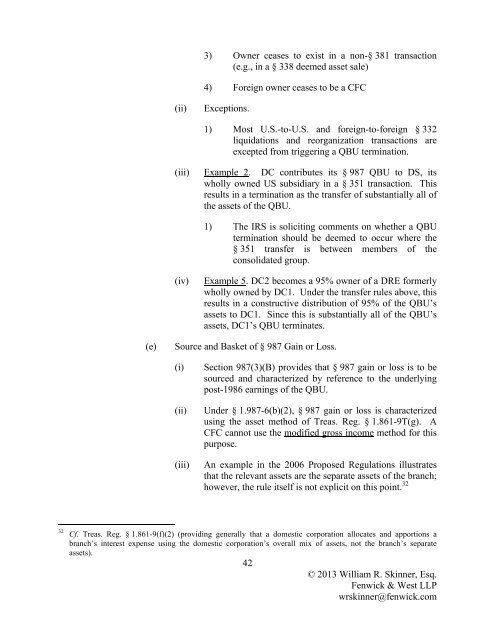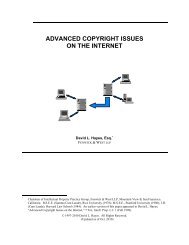International Tax Aspects of Foreign Currency Transactions
International Tax Aspects of Foreign Currency Transactions
International Tax Aspects of Foreign Currency Transactions
Create successful ePaper yourself
Turn your PDF publications into a flip-book with our unique Google optimized e-Paper software.
3) Owner ceases to exist in a non-§ 381 transaction(e.g., in a § 338 deemed asset sale)4) <strong>Foreign</strong> owner ceases to be a CFC(ii)Exceptions.1) Most U.S.-to-U.S. and foreign-to-foreign § 332liquidations and reorganization transactions areexcepted from triggering a QBU termination.(iii) Example 2. DC contributes its § 987 QBU to DS, itswholly owned US subsidiary in a § 351 transaction. Thisresults in a termination as the transfer <strong>of</strong> substantially all <strong>of</strong>the assets <strong>of</strong> the QBU.1) The IRS is soliciting comments on whether a QBUtermination should be deemed to occur where the§ 351 transfer is between members <strong>of</strong> theconsolidated group.(iv)Example 5. DC2 becomes a 95% owner <strong>of</strong> a DRE formerlywholly owned by DC1. Under the transfer rules above, thisresults in a constructive distribution <strong>of</strong> 95% <strong>of</strong> the QBU’sassets to DC1. Since this is substantially all <strong>of</strong> the QBU’sassets, DC1’s QBU terminates.(e)Source and Basket <strong>of</strong> § 987 Gain or Loss.(i)(ii)(iii)Section 987(3)(B) provides that § 987 gain or loss is to besourced and characterized by reference to the underlyingpost-1986 earnings <strong>of</strong> the QBU.Under § 1.987-6(b)(2), § 987 gain or loss is characterizedusing the asset method <strong>of</strong> Treas. Reg. § 1.861-9T(g). ACFC cannot use the modified gross income method for thispurpose.An example in the 2006 Proposed Regulations illustratesthat the relevant assets are the separate assets <strong>of</strong> the branch;however, the rule itself is not explicit on this point. 3232Cf. Treas. Reg. § 1.861-9(f)(2) (providing generally that a domestic corporation allocates and apportions abranch’s interest expense using the domestic corporation’s overall mix <strong>of</strong> assets, not the branch’s separateassets).42© 2013 William R. Skinner, Esq.Fenwick & West LLPwrskinner@fenwick.com
















